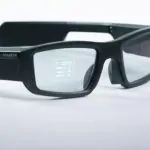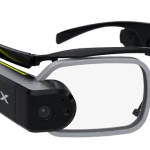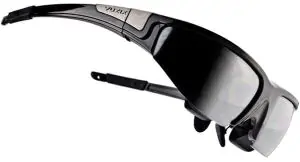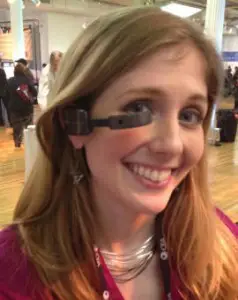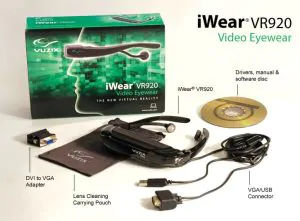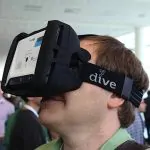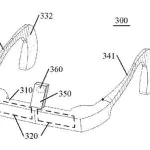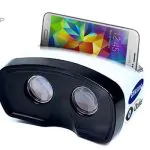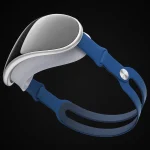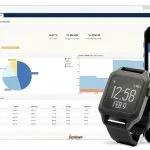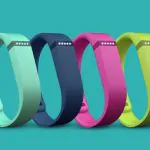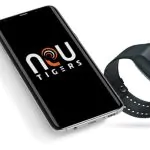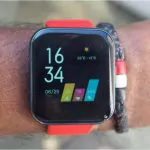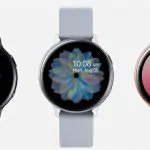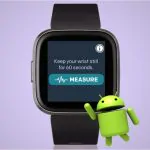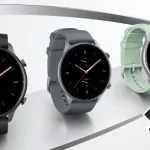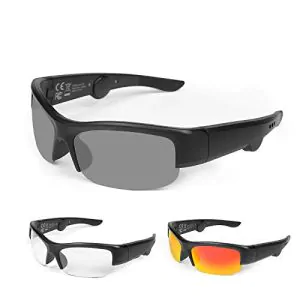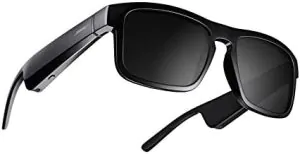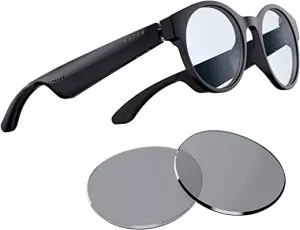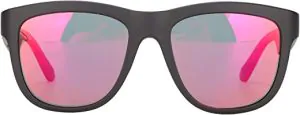By now most people, or at least those who consider themselves geeky, have undoubtedly heard of Google Glass, a wearable head-mounted display being developed by the search engine Giant. The idea behind Google Glass is to display information to the wearer of a pair of eyeglass frames via a small eyepiece. The wearer will be able to interact with the glasses with natural language voice commands. The Google Glass project is still in the development stages, and is planned to be released to the general public in late 2013. But although Google Glass is the most well-known, there are a number of other augmented reality headgear options to consider.

Recon Instruments Jet headset
Following closely on the heels of Google Glass, Recon Instruments is currently developing its Jet headset, a wearable eyeglass frames that, unlike the current Google Glass prototype, actually includes lenses. Like Google’s product, the Jet is slated to be released in 2013 and potentially includes a number of exciting features. The Jet utilizes a gaze-detection system that can determine when to turn on by the position of your eyes, as well an onboard camera, microphone and speaker for interaction with the device.

Vuzix M100 glasses
Vuzix has taken a slightly different approach to smart glasses by designing a device that resembles a bluetooth earpiece more than an actual pair of glasses. Rather than an eyeglass frame, the M100 features a single ear-mounted eyepiece/headphone combination that includes both bluetooth and WiFi connectivity to a smartphone. Touted as a hands-free smartphone display, the M100 provides full-color visual access to your phone’s mobile connection via it’s built-in android operating system. It is currently unclear when this device will be released.
Vergence Labs Epiphany Eyewear
Vergence Labs has taken the idea of wearable augmented reality a step further with the design of the Epiphany. Unlike most of the other headsets, the Epiphany promises to be stylish as well as high-tech, with a set of glasses that look less like a Borg implant and more like a normal pair of sunglasses. While little is known so far about just what applications the Epiphany will offer, Facebook and Twitter integration are definitely being touted. The Epiphany, like its counterparts, is not yet available for sale, but can be preordered for between $300 and $500.

Telepathy One
Telepathy seems to have a take a page straight from Google’s AR (augmented reality) book with the development of the Telepathy One. This headset appears, for the most part, very similar to the Google Glass. In fact, their own reports state that “no other company has quite capitalized on the publicity of Google Glass so much as our own.†Little details are disclosed about this device, but one must assume that features will be similar, if not identical, to Google’s device.

Olympus Meg4.0
Finally, there is the Meg4.0 being developed by camera giant Olympus. Unlike the Google Glass, the Meg4.0 it too large and bulky to be a standalone structure, and requires a pair of glasses (or a frame) to hang on. Also able to connect via a Bluetooth connection to your smartphone, the Meg4.0 promises about 2 hours continuous usage before needing recharged. At this time, Olympus is keeping the details hushed, including any possible pricing or launch dates but we’re sure to see something new soon.








